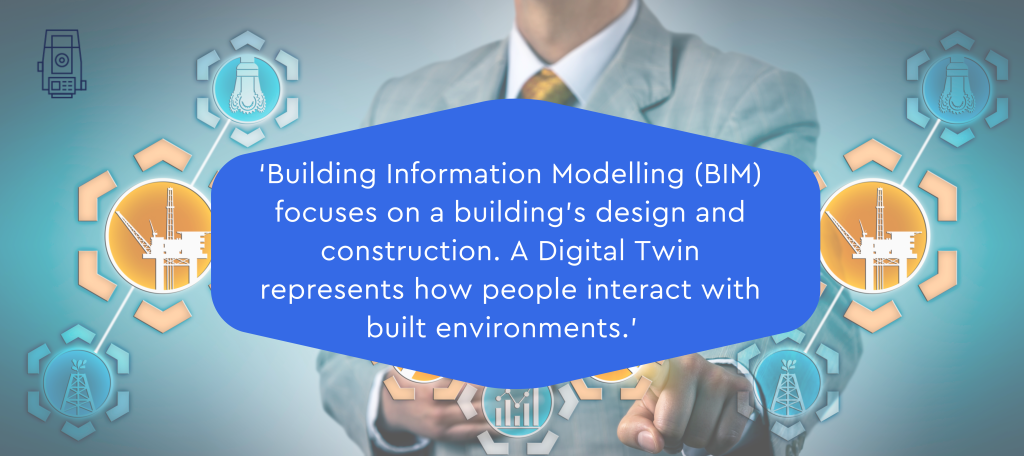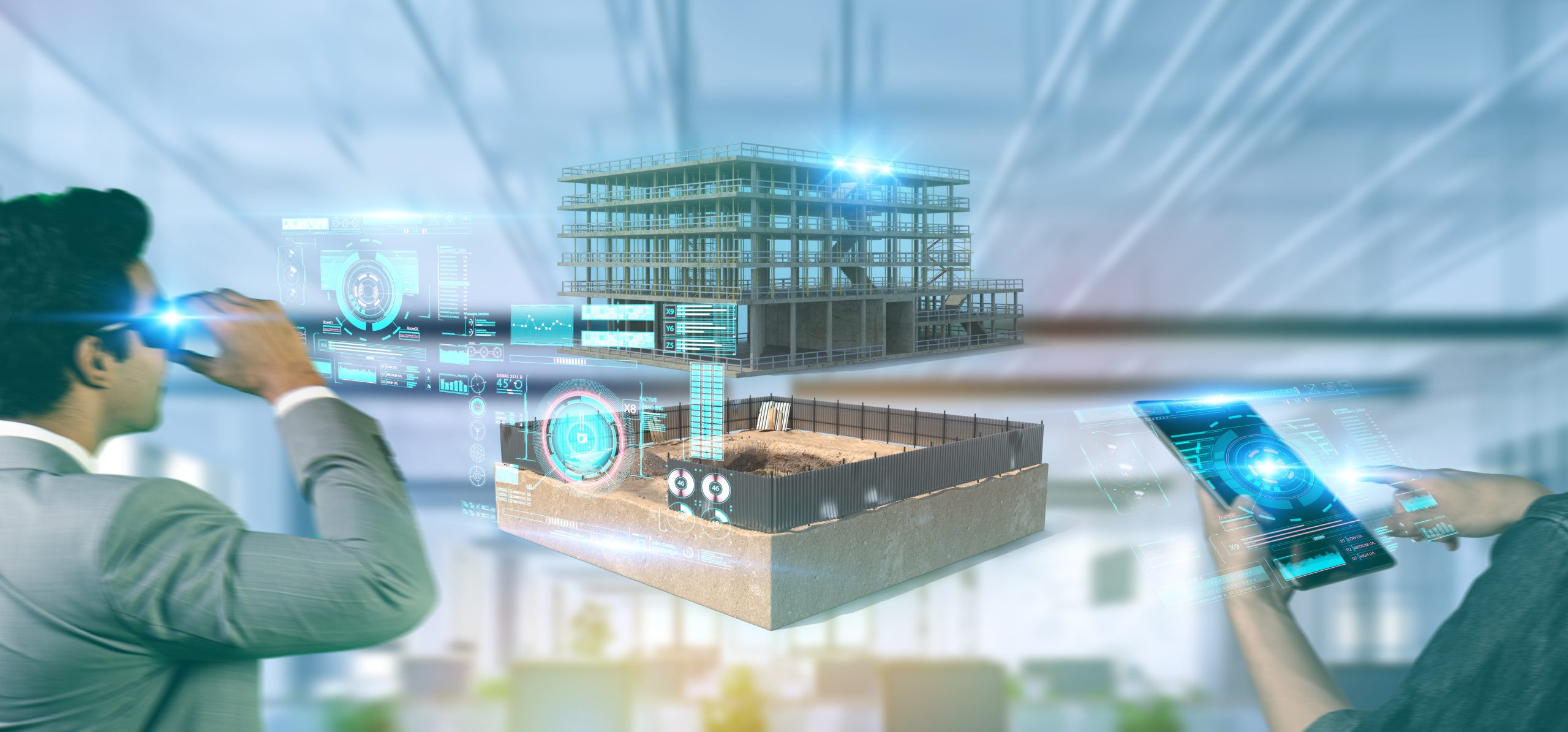What is a digital twin?
A digital twin is a virtual, digital model, designed to accurately reflect a physical object. Using sensors that are placed onto a physical object, such as a building. The data is then engineered into a digital representation. These sensors produce a lot of data on different aspects of the object’s performance. These can include energy output, temperature, and weather conditions. The data is then processed and applied to the digital copy. The digital copy can then be used to run simulations, study various performance issues, and can generate possible improvements. These can then be applied back to the original object.
Isn’t BIM the same as digital twin?
Building Information Modelling (BIM) is a digital representation of the physical and functional characteristics of a building. Whereas digital twins work in real-time. Architects and designers use BIM to renovate or design a building.

The geospatial and construction industry
Throughout the various stages of a project, digital twins are constantly being updated, reflecting the most current information regarding any aspect of the construction project. Teams can go onto the site and can see the digital version in real-time. This will highlight any issues, which could cause problems or delays in work. Being able to test in the virtual world before building in the physical world, means the digital twin can be analysed for any anomalies or problems with a design. It will also ensure all construction plans are in place, material quantities are more realistic, and material waste will be reduced. Preventing these delays will bring down the overall cost of the build.
The Cloud
It seems the whole world now works and collaborates on The Cloud. It’s never been easier to share drawings, topographic surveys, or 3D Models whilst working on site. Time can be better spent doing the work, rather than spending time looking for the correct, revised physical layout. All work can be accessed from handheld devices, so carrying paper copies around will become obsolete, making the correct data more accessible.
Construction and digital twins
Digital twins can account for actions and processes which are involved in the construction project, including materials and components.
BIM and digital twins allow for the building to be built virtually. The virtual version will give the specification of materials and components. Having these specifications will reduce the waste on-site and stop over-ordering of the materials, helping to decrease the material shortage.
Services are mapped out within the building. Being able to virtually see these services, allows mechanical and electrical (M&E) and utilities contractors to detect any clashes. Having these services virtually mapped out helps to prevent expensive mistakes and allows projects can run smoothly and on time.
Industries digital twin can be used in
- Engineering
- Building construction
- Power utilities
- Aircraft production
- Healthcare
Digital twin and sustainability
The built environment contributes to 40% of carbon emissions, and more needs to be done to reduce the emissions to the net-zero goal by 2050.
One of the advantages of using digital twins is their use in constructing sustainable buildings. Digital twins are used to make replicas of the building, which are updated in real-time. The University of Glasgow has recently used digital twins to make a replica of their buildings. These digital twins will enable them to create carbon-free buildings, helping to turn the tide on climate change.
Watch the video to find out more about how the university is using digital twins to become sustainable.
The future of digital twin
Digital twins are part of a digital and sustainable world. Fundamental changes are already happening. A digital reinvention is happening. The future of digital twins is limitless, due to their increasing usage. Having the ability to collaborate with different teams in real-time, digital twin software is continuously evolving with redefined processes. This means increased efficacy during the construction of complex buildings, which helps towards the goal of net-zero. It’s expected in the next five years there will be millions, if not billions of entities represented by digital twins. This will help drive businesses forward, with the fourth industrial revolution well on its way.
Do you have any upcoming projects involving digital twins, contact us today for a quote, by emailing surveyors@powersuk.com or calling our freephone 01928 734473. We look forward to working with you.








